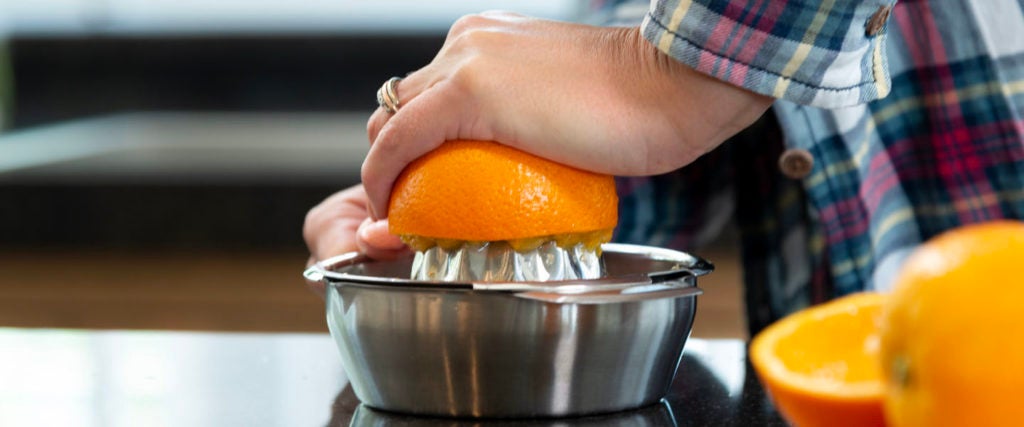Oh, what a spoiled generation of people we are that we can even host a rational debate over which oranges are the best for juicing. Less than 100 years ago, orange juice was regarded as such a delicacy that the writer of a 1926 letter to the editor of Oregon’s Medford Mail Tribune lamented how street vendors selling freshly squeezed orange juice for 10 cents per glass ($1.55 in 2021 money) were making a bigger killing than the owners of soda fountains.
During the same era, the editor of The Ocala Evening Star was busy begging chemists to get their acts together to discover ways to preserve orange juice and make it suitable for bottling and shelving because of the overall boon it would be to Florida’s citrus-dependent state economy.
Well, the chemists figured it out (yay, science!), and the presence of orange juice is now taken for granted to such an extent that you would think you woke up in the Soviet Union of the late 1970s if at least eight different varieties of it weren’t lining the beverage aisle of your grocery store. (“In Soviet Russia, the orange juices you!”)
But for the sake of argument, let’s suppose you don’t trust the store-bought stuff that provides Floridians with so much of that sweet, sweet moolah, and you want to get in on the action by slangin’ glasses on the street for $1.55 a pop. Well, before you go through the trouble of setting up your black-market supply network for oranges, and getting splattered with orange liquid for nothing, let’s figure out which oranges are actually the best for juicing.
I already have it narrowed down: It’s going to be either California oranges or Florida oranges.
It’s true that those states combine to produce more than 90 percent of all U.S. citrus fruit annually, but geographic distinctions aren’t really what we’re talking about here. At the same time, it is worth exploring a little bit. According to people who seem to know their oranges pretty well, the dissimilarities in the temperatures of California and Florida result in the growth of oranges with noticeable physical differences, even if they’re otherwise the same genetically.
California’s hot days and cool nights generate oranges with thick peels that lock in flavor and freshness like natural Tupperware. This also makes them more durable when it comes to transportation over long distances, and more appealing to the eyeballs of grocery store shoppers. On the other hand, Florida’s heat and humidity result in juicier oranges with thinner skins, which makes them more susceptible to hurt feelings, but also perfect for the production of delectable orange juice.
So while it’s true that there are differences between California oranges and Florida oranges when it comes to juicability, we’re far more interested in the types of oranges produced by different orange trees.
Okay, I understand… So it’s not about geography.
Gotcha, sucker! It’s entirely about geography!
Where the different types of oranges are presently grown is intricately tied to the climates they grow best in. Whereas roughly half of Florida’s 150 million cartons of oranges each year are Valencia oranges, 75 percent of California’s 60 million oranges are of the navel variety
Which brings us straight into the inescapable heavyweight bout — most of the discussion about best juicing oranges occurs between proponents of the navel and Valencia oranges, since they’re unchallenged as the most commonly grown oranges in the U.S.
I love a good fight! Should I be prepared for a climactic 12-round slugfest?
As far as we’re concerned, the Valencia orange wins this one via first-round knockout. Navel oranges have a fatal flaw — the flesh of navel oranges contains the compound limonin, which breaks down and becomes bitter when exposed to air. The instant you start tearing apart a navel orange — even before you’ve juiced it — the limonin is already beginning to sour the juice of that orange. In contrast, Valencia oranges retain limonin in their seeds, so there’s no infusion of it into the flavor of the Valencia’s juice as long as the seeds retain their integrity and are separated from the rest of the orange.
For this reason — not to mention the fact that Valencia oranges naturally grow plumper and juicier in the Florida sun than navel oranges could ever hope to grow in California — Valencia oranges should be your go-to selection if you’re forced to choose between the two most prevalent and least expensive orange varieties. I don’t care what anyone else says.
Understood. But what if I want to spice things up a bit?
Feeling adventurous, eh? I’ve got you covered like a Beatles tribute band.
If you feel like splurging, you might want to consider mandarin oranges, which are sweeter than Valencias, but also tinier. The mandarin’s juice might taste better, if sweetness is your thing, but you’re also going to have to work harder to maximize your output. And, again, they’re also more expensive, with two pounds of low-output mandarins setting you back as much as four pounds of juicy Valencias.
Blood oranges are also popular, sweet tasting and attractively colored — to say nothing of how cool sounding they are — but a fondness for them might have you selling blood in order to acquire them. They’ve been known to cost two to three times as much per pound as Valencias and navels.
So when you get right down to it, I suppose the matter of which oranges you opt to squeeze will be decided by how much money you’re prepared to pay, how much work you’re prepared to put in, who you’re trying to impress and how refined of a palate you’re pretending to have.

